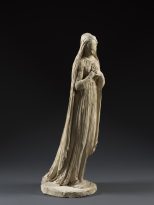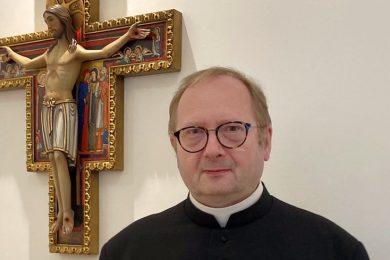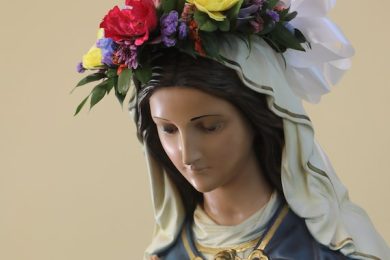By Jem Sullivan | OSV News
The neoclassical sculptor Antonio Canova is best known for his ethereal marble pieces that evoke the beauty of the idealized human form. A devout Catholic, Canova (1757-1822) began his artistic career at a young age under the guidance of his grandfather, a stonemason and sculptor. Gifted with exceptional creativity and technical skills, Antonio quickly became the most celebrated European artist of his time.
“Canova: Sketching in Clay,” a unique exhibit at the National Gallery of Art in Washington, offers visitors an extraordinary glimpse into Canova’s creative process of sketching models in clay for plaster molds, from which marble sculptures were then painstakingly chiseled. The exhibition is the first in over 50 years to highlight the sculptor’s terracottas (fired clay) sketches, many of which come from the Museo Gypsotheca Antonio Canova in Possagno, his hometown in northern Italy, and other European collections.
In our age of mass-produced objects, these masterworks in clay offer a rare visual connection to the human touch of an artist’s creative hand: One sees Canova’s rugged fingerprints in the clay.

Divided into three thematic sections — myths and legends, faith and monuments, and portraits, the viewer is led on a journey that spans Canova’s origins in Possagno and his major commissions in Rome, to the evocative clay models he created at the end of his life. While many of his celebrated marble sculptures depict Greek and Roman mythological figures, he created many pieces with religious themes, including imposing papal monuments to Pope Clement XIII in St. Peter’s Basilica, and Pope Clement XIV in Rome’s minor Basilica Church of Santi Apostoli, shown in this exhibit as a lifesized photo.
From over 30 sculptures on display, two religious themed terracottas stand out in their subtle, evocative power. The Penitent Magdalen is an intense piece of religious sculpture. Completed in 1791, Canova’s sketch bears the imprint of his hands, with rough lines of rapid movement visible in the clay. The sculptor elevates the humble medium into a spiritually charged image of Mary Magdalene, whose feast is celebrated July 22. The saint, a disciple of Jesus and among the first to encounter the risen Lord, kneels with her frame curved inward in a gesture of repentance. Her head, capped with flowing hair, droops over her left shoulder in prayer, as her hands stretch out to receive divine mercy and forgiveness. To her left is a skull, an artistic attribute that evokes her mortality and the transitory nature of life itself. For the marble sculpture inspired by this clay model, Canova included a brilliant touch — a contrite tear streaming down the smooth marble face of the saintly penitent.
Another religious clay sketch with historical significance is the Immaculate Virgin. Canova sculpts Mary of Nazareth as a young woman who exudes an otherworldly quality. Her slight figure is enveloped in a veil of many folds, dropping from the crown of her head to the sculpture base. Mary gently inclines her head to the right, drawing our eye to her beautiful, contemplative face in profile. The sculptor’s skillful hand creates multiple folds radiating from Mary’s garment, clinging to her fragile frame.
This terracotta sketch was completed between 1818 and 1822, only three decades before the Catholic church formally defined the doctrine of the Immaculate Conception, in 1854. Then- Pope Pius IX expressed the belief that the Virgin Mary was — from the first moment of her conception — by an unprecedented grace and privilege of God, preserved from the effects of original sin.

At the Annunciation the Archangel Gabriel greeted Mary as being “full of grace” — enriched by God with gifts appropriate to her exalted role as the mother of Jesus. Few artists have matched Canova’s achievement, translating into sculptural form the church’s belief in the singular divine grace given to Mary in her immaculate conception.
Visitors are treated to numerous iconic works that invite one to marvel at the artistic process from clay to marble under the creative genius of Canova’s hand. In a companion video, visitors can watch a contemporary artist, in imitation of Canova, at work in the process called “pointing” that transfers an artist’s vision from a sketch in clay to plaster to marble.
A rare visual treat, this impressive exhibition is on view in the West Building of the National Gallery of Art, from June 11 through October 9, 2023, and at the Art Institute of Chicago from November 19, 2023, through March 18, 2024.
– – –
Jem Sullivan holds a doctorate in religious education and is an associate professor of Catechetics in the School of Theology and Religious Studies at The Catholic University of America in Washington, D.C. She has served as a docent at the National Gallery.




















